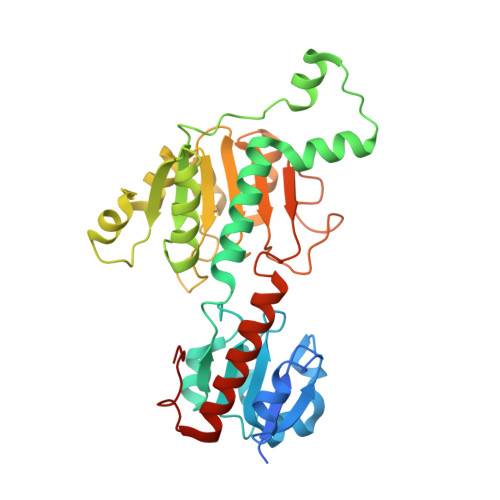Transcription Corepressor CtBP Is an NAD+-Regulated Dehydrogenase
Kumar, V., Carlson, J.E., Ohgi, K.E., Edwards, T.E., Rose, D.W., Escalante, C.R., Aggarwal, A.K.(2002) Mol Cell 10: 857-869
- PubMed: 12419229
- DOI: https://doi.org/10.1016/s1097-2765(02)00650-0
- Primary Citation of Related Structures:
1MX3 - PubMed Abstract:
Transcriptional repression is based on the selective actions of recruited corepressor complexes, including those with enzymatic activities. One well-characterized developmentally important corepressor is the C-terminal binding protein (CtBP). Although intriguingly related in sequence to D2 hydroxyacid dehydrogenases, the mechanism by which CtBP functions remains unclear. We report here biochemical and crystallographic studies which reveal that CtBP is a functional dehydrogenase. In addition, both a cofactor-dependent conformational change, with NAD(+) and NADH being equivalently effective, and the active site residues are linked to the binding of the PXDLS consensus recognition motif on repressors, such as E1A and RIP140. Together, our data suggest that CtBP is an NAD(+)-regulated component of critical complexes for specific repression events in cells.
Organizational Affiliation:
Department of Biology Graduate Program, University of California, San Diego, La Jolla, CA 92093, USA.
















